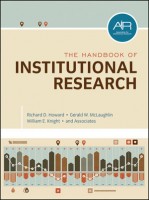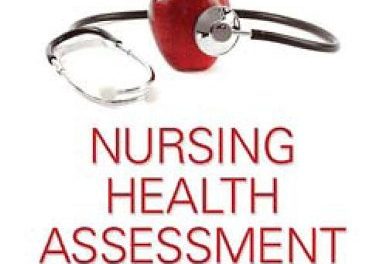
Editors: Richard D. Howard, Gerald W. McLaughlin, William E. Knight & Associates
Publisher: Jossey-Bass, an Imprint of Wiley – Higher Education – 727 pages
Book Review by: Paiso Jamakar
My guess is that most readers probably do not know what institutional research is. This is a relatively recently field of work and study, probably no more than half a century old. What is it? Joe Saupe defined it in 1990: “Institutional research is research conducted within an institution of higher education to provide information which supports planning, policy formation and decision making.”
Institutional research provides information and services to basically three types of people: administrators and their staffs, faculty members, and coordinating groups and other outside agencies.
This large book with three editors and more than 70 contributors who wrote on various aspects of institutional research is a valuable reference work, to say the least. It is presently the definitive updated work in this field. The last such book on this subject was the 1971 book Institutional Research in the University: A Handbook, by Prof. Paul Dressel and his associates at Michigan State University.
This book is meant for university and college administrators, faculty members, students, practitioners in the field, and anyone and everyone else involved in or interested in this profession.
Among the purposes, described by the editors for publishing this book, are: to provide the historical and theoretical foundations of institutional research; to support planning and decision-making; to respond to external accountability mandates; to provide data sources built by and available to institutional research professionals; and to provide the tools and techniques used to study our institutions and inform all members of the academy.
To elaborate further on its functions and uses, the editors write that institutional research provides specific services whose aim is to:
- Provide a research basis for critical examinations of teaching procedures and practices
- Create a better understanding of the purpose of a curriculum and course
- Determine a basis for comparative judgments concerning instruction and curriculum building
- Obtain a better understanding of admissions practices, examinations procedures, graduating practices and workloads.
- Obtain a better understanding of the role of the faculty member in the administration of a college or university
- Develop a better understanding of the factors that influence costs
- Obtain a better understanding of the way in which curricular decisions can impact the use of resources such as space utilization, building costs, and routine operations
- Provide up-to-date statistics on the characteristics of the institution, identifying trends in any of these characteristics, providing data and information useful in obtaining financial support, and providing data useful in explaining the mission and achievements of the institution.
The above is a large list of very broad functions that institutions of higher education need to perform. For this reason, the editors write that IR professionals need to develop numerous skills, including critical thinking, reasoning, technical and management skills. In order to be successful in their work, they also should acquire an understanding of campus systems and divisional cultures, the editors point out.
This book is organized into four parts with a total of 38 chapters, so the IR student or professional can quickly go to a specific topic and read the available information on it.
The four chapters are entitled: Part 1: The History, Theory and Practice of Institutional Research; Part 2: Supporting Campus Leadership and Management; Part 3: Bridging Internal and External Requirements for Institutional Research; and Part 4: Institutional Research Tools and Techniques.
Large numbers of tables, figures and exhibits are spread throughout the volume to aid the reader in absorbing the information.
An example of the type of information that is useful to the human resource department of a university is provided in Table 2.1 on page 27 entitled Highest Degree and Years Experience. This lists the degrees from top to bottom and the number of staff members at the university who held them, from left to right in the 1980s, 1990s, and in 2008.
A typical example of a figure is Figure 2.4 entitled IR Organized by Major Function, Typical for the Professional Bureaucracy Version or IR. This is a simple organizational chart, with the Director of Planning and IR at the top in charge of four departments: External and Internal Reporting, Planning and Special Projects, Data Management and Technical Support, and Research and Development.
An example of exhibits found in this book is Exhibit 3.1 – Terenzini’s Three Organizational Intelligences of Institutional Research. This is an outline of three types of intelligence – technical and analytical, issues, and contextual – with details under each heading showing what needs to be done for each type of intelligence to be effective in accomplishing the purposes outlined.
Richard D. Howard, Gerald W. McLaughlin and William E. Knight have done an admirable job of gathering the vast amount of material in this book and worked painstakingly to organize and present it in an expert way. Our kudos to them and to the contributors. For the IR student or professional, this is the book you must own and keep!







